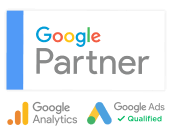Maintaining Consistency A Guide to a Successful Content Calendar
Importance of Consistent Content Management

In today’s fast-paced digital world, consistent content management is vital for businesses aiming to build a strong online presence. It ensures that your website content and digital assets remain organized, up-to-date, and aligned with your brand messaging. By leveraging tools like content management systems (CMS platforms) and digital asset management systems, businesses can streamline processes and achieve long-term success.
Supporting Seamless Content Creation
A robust content management strategy simplifies the process of creating and publishing content. With a reliable CMS platform, you can efficiently manage web pages, blog posts, and multimedia files, reducing redundancies and improving productivity. This approach fosters creativity and allows your team to focus on delivering high-quality digital content.
Enhancing Website Content Organization
Managing website content effectively is critical to providing a positive user experience. A well-structured content management system ensures that information is easy to find and navigate, keeping visitors engaged and encouraging them to explore further. Organized web pages reflect professionalism and build trust with your audience.
Simplifying Digital Asset Management
Digital asset management systems play a key role in handling images, videos, and other media files. These systems allow you to store, categorize, and retrieve assets quickly, ensuring consistent branding across all digital content. This level of organization eliminates inefficiencies and helps maintain a cohesive online identity.
Aligning Content with Business Goals
Consistent content management ensures that all website content and digital campaigns align with your overarching business objectives. By using CMS platforms to track and analyze content performance, you can identify what resonates with your audience and refine your strategy accordingly.
Improving Collaboration and Efficiency
Content management systems facilitate collaboration among team members by providing centralized access to content and tools. Whether creating web pages or updating existing website content, team members can work together seamlessly. This streamlined approach saves time and reduces the risk of errors.
Adapting to Changing Needs
Digital content needs to evolve, and a strong content management system allows businesses to adapt efficiently. Whether expanding your website, launching a new campaign, or updating existing information, a CMS platform ensures that changes can be implemented without disrupting your workflow.
Consistent content management is more than just a behind-the-scenes process—it is the foundation of a successful digital presence. With the right tools and strategies, you can manage content effectively, enhance your online visibility, and achieve lasting growth.
Choosing the Right Content Management System

Selecting the ideal content management system (CMS) is a critical decision for any business or organization aiming to manage content efficiently. The right CMS enables you to create content, collaborate seamlessly, and maintain a well-structured digital presence. With a variety of options available, understanding your specific needs and key features is essential to making an informed choice.
Understanding the Basics of Content Management Systems
Most content management systems provide tools for creating, editing, and publishing content without requiring extensive technical knowledge. They are designed to help businesses manage website content efficiently while ensuring compatibility with web hosting services and search engines.
Comparing Popular CMS Platforms
Popular CMS platforms like WordPress, Drupal, and Joomla offer a range of features to suit different requirements. These platforms are ideal for businesses that need customizable templates, support for multiple team members, and seamless integrations. By evaluating these options, you can determine which CMS aligns best with your goals.
Evaluating Features for Multiple Users and Teams
For businesses with multiple team members working on the same content, it is essential to choose a CMS that supports collaboration. Look for systems that allow multiple users to access and edit content simultaneously while maintaining version control. This ensures that everyone stays on the same page without compromising quality or workflow efficiency.
Exploring the Benefits of Headless CMS
A headless CMS separates the content creation process from the front-end design, offering flexibility and scalability. This option is ideal for businesses aiming to publish content across multiple platforms, such as websites, mobile apps, and social media channels. With a headless CMS, you can focus on creating content without being restricted by front-end frameworks.
Considering Customizable Templates and User Experience
Customizable templates are a valuable feature for businesses that want to maintain a unique and professional appearance. These templates make it easier to align your website design with your brand while ensuring a user-friendly experience for your audience. Most content management systems offer a variety of templates to suit different industries and needs.
Ensuring Compatibility with Search Engines
When choosing a CMS, prioritize systems that are optimized for search engines. Features like SEO-friendly URLs, metadata customization, and responsive design can significantly impact your website's visibility in search engine results. An SEO-friendly CMS ensures that your content reaches a wider audience.
Assessing Technical Knowledge Requirements
Consider the technical knowledge required to operate a CMS. While some platforms are user-friendly and designed for beginners, others may require advanced skills. Evaluate your team’s expertise and select a system that matches their capabilities to ensure smooth implementation and usage.
Balancing Cost and Value
The cost of a CMS can vary widely depending on features, web hosting needs, and scalability. Assess your budget and consider the long-term value a CMS will bring to your business. Whether opting for a free platform or a premium solution, ensure that the system provides the necessary tools to achieve your content goals.
Choosing the right content management system is a strategic decision that impacts your ability to create content, collaborate effectively, and maintain a strong online presence. By evaluating your needs and exploring the features of various CMS platforms, you can find a solution that drives success for your business.
Planning Your Digital Content Strategy

A well-thought-out digital content strategy is the cornerstone of a successful online presence. It involves identifying your goals, understanding your audience, and leveraging the right tools to publish digital content effectively. With the rise of e-commerce stores, social media platforms, and dynamic websites, having a comprehensive strategy is more important than ever.
Defining Clear Objectives for Your Content
The first step in planning your digital content strategy is defining your objectives. Whether you aim to boost search engine rankings, drive traffic to e-commerce stores, or enhance brand awareness on social media platforms, your goals should guide your content creation and publishing processes.
Conducting Keyword Research for Search Engine Optimization
Search engine optimization (SEO) plays a critical role in ensuring your content reaches the right audience. Identify relevant keywords and incorporate them naturally into your digital content. This improves visibility on search engine results pages and helps attract users actively searching for your products or services.
Selecting the Right Platforms for Publishing Content
Consider the platforms where you will publish digital content. Social media platforms are excellent for engaging with audiences, while dedicated websites or e-commerce stores are ideal for showcasing products and services. Using tools like Adobe Experience Manager Sites can simplify content publishing across multiple channels with its intuitive interface and robust features.
Optimizing Content for Web Development and Servers
Work closely with your web development team to ensure your content strategy aligns with your web server’s capabilities. A fast-loading website with a responsive design enhances user experience and contributes to better search engine rankings. Ensure your web development framework supports your content goals seamlessly.
Streamlining Content with Document Management Tools
Document management systems are essential for organizing drafts, media files, and other resources during the content planning process. These tools help streamline workflows and ensure your team stays productive and efficient when creating and publishing digital content.
Integrating E-Commerce and Content Marketing
For e-commerce stores, a strong digital content strategy should focus on showcasing products in a compelling way. Publish high-quality descriptions, images, and videos that highlight the benefits of your offerings. Incorporating SEO techniques and aligning content with your web development strategy ensures maximum impact.
Scheduling Content for Maximum Engagement
Effective scheduling ensures your digital content reaches the right audience at the right time. Use content calendars to plan posts for social media platforms, blog updates, and email campaigns. Consistent scheduling builds trust with your audience and maintains their interest over time.
Leveraging Analytics for Continuous Improvement
Analyze the performance of your published content to identify what works and what doesn’t. Metrics such as website traffic, engagement rates, and search engine rankings provide valuable insights. Use this data to refine your strategy and optimize future content for even better results.
Planning your digital content strategy requires a holistic approach that combines creativity, organization, and technical expertise. By focusing on SEO, leveraging tools like document management systems, and aligning with your web development framework, you can publish digital content that resonates with your audience and drives measurable success.
Organizing Content Across Multiple Platforms

Managing and organizing content across multiple platforms is essential for businesses aiming to maintain consistency and efficiency. With the right CMS software, you can streamline content creation, modification, and distribution, ensuring your message is cohesive and impactful.
Using CMS Software to Centralize Content Management
CMS software plays a crucial role in centralizing content across platforms. Most CMS platforms provide tools that allow users to create, edit, and modify content seamlessly. By managing everything in one place, you reduce duplication and maintain consistency across websites, landing pages, and other digital channels.
Leveraging Workflow Management for Efficiency
Workflow management is key to keeping your team organized when working on complex websites or multiple platforms. Many CMS platforms come with built-in tools for assigning tasks, tracking progress, and maintaining deadlines. This ensures that all team members are aligned and that content is delivered on time.
Simplifying Content Creation with Drag and Drop Interfaces
A drag-and-drop interface makes organizing and designing content easier, even for users without technical expertise. Most CMS platforms offer intuitive tools for arranging elements on landing pages and websites. This feature allows you to quickly create and update content, saving time and ensuring flexibility.
Modifying Content Across Platforms
The ability to modify content efficiently is essential when managing multiple platforms. CMS software allows you to make updates that automatically reflect across various channels, eliminating the need for repetitive changes. This ensures that your messaging remains consistent, whether on your main website or specific landing pages.
Enhancing SEO with Built-in Features
Built-in SEO features are a vital component of most CMS platforms. These tools help optimize your content for search engines by allowing you to customize metadata, URLs, and headings. Optimized content improves search engine rankings and ensures your audience can find your website and landing pages easily.
Managing Content for Complex Websites
Organizing content for complex websites requires advanced CMS features such as categorization, tagging, and dynamic page generation. These tools help you maintain a clear structure and ensure that visitors can navigate your site effortlessly. CMS software designed for scalability is ideal for managing large or multi-faceted websites.
Coordinating Across Multiple Platforms
When working across multiple platforms, it is essential to ensure that your branding and messaging are consistent. A robust CMS allows you to create templates that can be reused and adapted for various channels, saving time while maintaining quality.
Optimizing Landing Pages for Better Engagement
Landing pages are often the first point of interaction for potential customers. Organize and optimize these pages to deliver targeted content and capture leads effectively. Use workflow management tools to ensure timely updates and drag-and-drop interfaces for quick design adjustments.
Monitoring Performance Across Platforms
Tracking the performance of your content across multiple platforms is critical for identifying what resonates with your audience. Most CMS platforms provide analytics integrations that allow you to assess engagement and make data-driven decisions for future updates.
Organizing content across multiple platforms requires a blend of strategic planning and the right tools. With features like drag-and-drop interfaces, workflow management, and built-in SEO capabilities, CMS software simplifies the process and ensures your content performs optimally across all channels.
Scheduling Content for Maximum Engagement

Effective scheduling is critical to ensuring your content reaches the right audience at the right time. With the help of modern tools and platforms, businesses can streamline their publishing workflows and maximize the impact of their digital campaigns. Whether using a traditional CMS or a website builder with advanced features, a well-thought-out content schedule keeps your strategy consistent and engaging.
Utilizing a Drag and Drop Editor for Easy Scheduling
A drag-and-drop editor simplifies the process of scheduling content across platforms. These intuitive tools allow you to visually organize posts, blog entries, and updates on a timeline, making it easy to see what will be published and when. This approach helps reduce errors and ensures timely delivery of your content.
Streamlining with a Content Editor for Flexibility
A content editor within your CMS or website builder provides a centralized location for drafting and scheduling posts. By integrating scheduling features into the editor itself, businesses can efficiently manage updates without needing separate tools. This feature is particularly useful for creating and planning multiple pieces of content simultaneously.
Aligning the Development Process with Content Scheduling
Incorporating scheduling into the development process ensures your content is ready for publication as soon as your platform is live. Traditional CMS platforms often integrate seamlessly with custom-built systems using a programming language of choice, allowing for greater flexibility and control in content deployment.
Fostering Collaboration in a Collaborative Environment
A collaborative environment is essential for maintaining an organized and effective content schedule. Teams can use shared calendars and CMS tools to plan, edit, and approve content before publication. Features that enable multiple users to work on the same project in real-time streamline workflows and ensure everyone is aligned with the schedule.
Balancing Automation and Manual Scheduling
Automated scheduling tools in most traditional CMS platforms and website builders allow you to plan content weeks or even months in advance. These tools are ideal for repetitive tasks, such as publishing recurring blog posts or promotional updates. However, manual scheduling remains valuable for customizing posts for specific events or audience needs.
Integrating Scheduling into Website Builders
Modern website builders often include robust scheduling features as part of their offerings. These tools let you plan updates for web pages, blog posts, and multimedia content without needing in-depth programming language knowledge. This integration makes it easier to maintain a consistent online presence.
Measuring Engagement After Scheduling
The development process doesn’t end with scheduling—tracking the performance of your scheduled content is equally important. Use analytics tools within your CMS or website builder to measure engagement metrics such as clicks, views, and shares. This data provides insights into the optimal times and types of content to publish in the future.
Scheduling content for maximum engagement requires a blend of planning, collaboration, and the right tools. With features like drag-and-drop editors, content editors, and automation capabilities, businesses can streamline their workflows and ensure their content resonates with their audience at the perfect time.
Take Your Digital Strategy to the Next Level
Ready to elevate your digital strategy? Contact LevelUP Digital today to transform your online presence, streamline your content management, and achieve measurable results. Let’s work together to build a customized solution that meets your unique needs. Reach out now and take the first step toward leveling up your digital success!

Location
25 Holden Street
Providence, RI 02908
Contact Us
Location
25 Holden Street
Providence, RI 02908


















